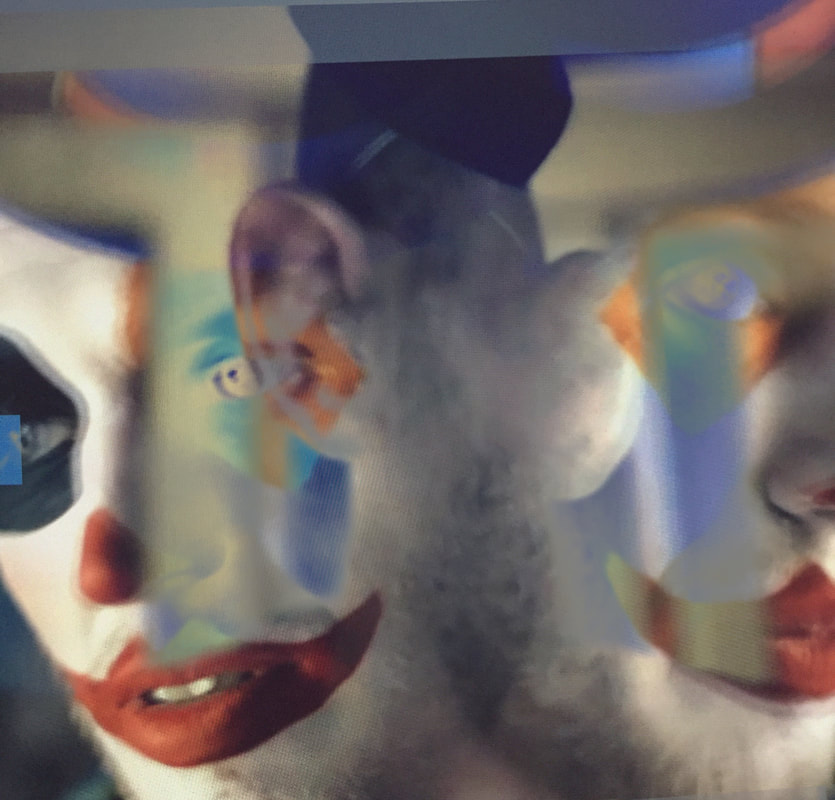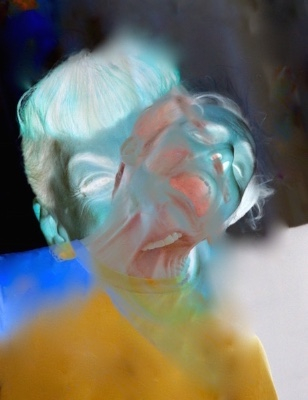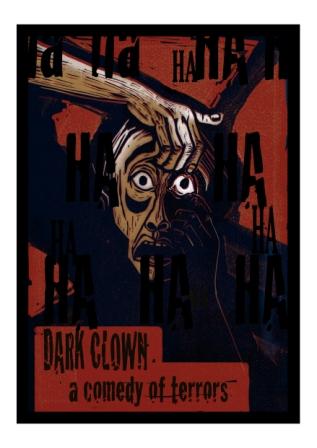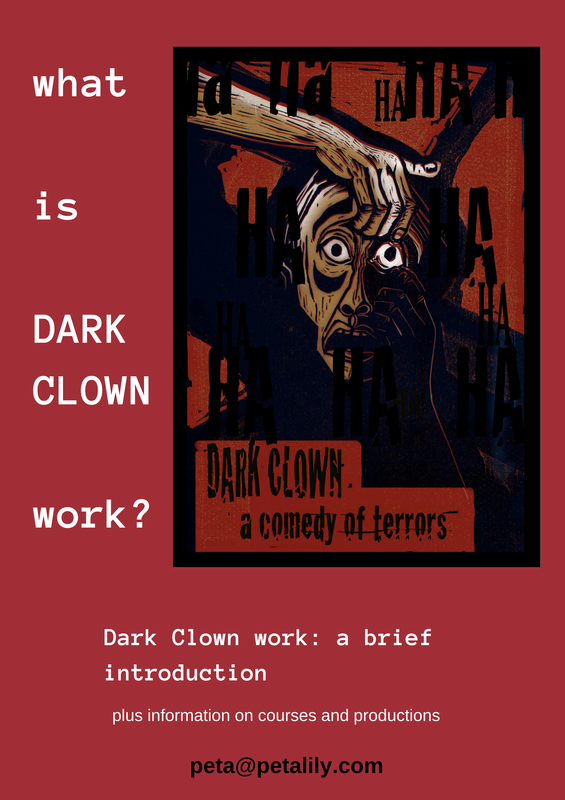 photocollage - using images shot from the TV screen during Grayson Perry's series on manhood (this is a cage fighter who dresses himself as a clown)
photocollage - using images shot from the TV screen during Grayson Perry's series on manhood (this is a cage fighter who dresses himself as a clown) Mime Lab, (as they are know for short) have mounted shows directed by the highly respected veteran mime /physical theatre practitioner David Glass, and also invited me to direct them a number of times.
In 2000, they were courageous enough to invite me to create a show for them in Dark Clown: Hamlet or Die. (Audiences were, in the main, shell-shocked: ‘Electrifying…It set a new benchmark for me’ ; ‘hilarious and disturbing’ ; ‘troubling and powerful ; ‘it was very good….ruined my Friday evening’ ; ‘full of power and commitment’ ; ‘wonderful and awful’ ; ‘I sang along with the prison guard and afterwards I felt so small’ ; ‘we felt so totally implicated and yet none of us got up to leave’ ; ‘horrifically, hilariously fascinating!’) It allowed my thinking and teaching of the body of work I was developing under the title of Dark Clown to develop to a new level.
Mime Lab have invited me back to direct a new piece. I knew I wanted to do something on the seeming rise of phobia about clowns. Also to deal with the hijacking of clowns by thugs. And the sorry fact that daily in satirical cartoons and Facebook posts the word 'clown' is bandied about as an insult. And it's unsettling to see some people in positions of responsibility adopting an air of bluster and rascality as a kind of misdirection - i.e the ex-Lord Mayor seems to want to give a message : 'I am harmless, forgivable'. To make a lame joke - it's giving clowns a bad name.
But of course, it's more complicated than that. Not all clowns are sweet - they unsettle, their have their roots in the tricksters of ancient times - deceivers, mischief-makers, creators of chaos (for example the Norse god, Loki).
Many have written on this subject, and spoken on it. You can check out the Clown Symposiums held by Bim Mason*.
Here is what I wrote a while ago as a short mission statement/preliminary vision' to myself: Coulraphobia (fear of clowns) is on the rise. Who is at risk? What is at risk? When is funny heartwarming and when is it threatening? Can you venture to the Uncanny Valley and survive? If horror movies make us fear clowns, then who do clowns fear? Thugs masquerade as clowns. McDonald’s ‘enslave’ a clown. Politicians are colonising nonsense. When chaos and unpredictability is everywhere – what happens to the clown? And what happens to the human heart? And if clowns were to rebel – would they resort to mischief or mayhem?
Grateful to Mime Lab and also grateful to fellow theatre practitioners and other valued friends who took time time today to reply to my request for feedback on copy towards advertising the show.
I knew 'Coulraphobia' would not work for the piece as show title in English or in Cantonese. Mime Lab delighted me with the title: The Death of Fun’ Chinese Title: 樂於嚇人 (translates as 'Pleasure to Scare You').
A journalist friend supplied finessing and a satisfying last line for the brief poster copy:
The Death of Fun
What would life be like without laughter?
The clowns of the world are worried.
No one is taking them seriously...
Horror meets humour - but the absurd has the last laugh.
A fellow theatre practitioner challenged the 'mission statement' above: '...too many big questions. They're all valid but they feel disconnected: is it about what the clowns fear? is it about them being annoyed that thugs, politicians and mcdonald's give them a bad name by masquarading as clowns? Who is going to the Uncanny Valley? Also some questions feel like they could relate to the show and others like they're a commentary on the outside world. How do the two fit together?
I can see that there are strands inspiring my original thinking e.g. Uncanny Valley and allusion to political events and corporate power which will serve better as driving the spirit of the piece (external context rather than overt content).
I am aiming to explore:
...a kind of ‘Huis Clos’ for Clowns – an assortment of clowns find themselves gathered together in an unspecified location. A mime clown, a Chaplin lookalike, a Cantonese Opera Clown, a scary masked clown, a traditional western circus clown. Are they here for a celebration, for an audition, for a funeral, for questioning? Or worse? They find themselves compelled to perform: acrobatics, plate spinning, balloon animals. What if they fail? Existential problem – Clowns are born to fail. And if Failure is not an option what is the appropriate punishment? Surgical removal of the Funny Bone?
*Bim Mason’s Clown Power Symposium 2017
1/ https://vimeo.com/202070978
2/ https://vimeo.com/203435027
(you can also see Bim Mason’s Clown Power Symposium 2016 – where I spoke about my Dark Clown work
https://vimeo.com/143601205)


 RSS Feed
RSS Feed
